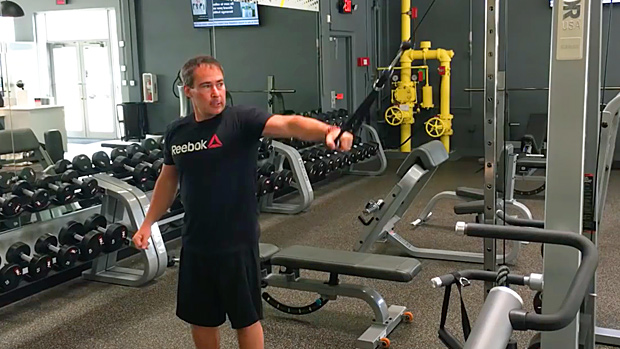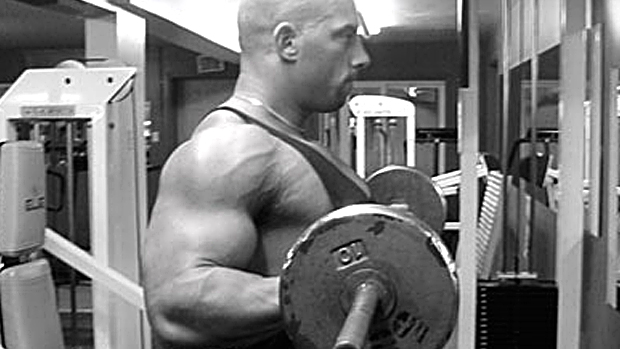Here's what you need to know...
- Training more often is better for building muscle than cramming more and more into a long workout.
- Ideal High Frequency Training (HFT) exercises include pull-ups, push-ups, dips, lunges, single-leg squats, and single-leg deadlifts.
- Do one of these exercises every day outside of your normal workout, adding a rep each day.
- Use HFT for the long haul. The best gains come in the last two months. You may find yourself being the most muscular you've ever been.
There's a mind-numbing array of training programs out there. But most modern programs fail to provide faster muscle growth than lifters achieved in 1969. True, today's bodybuilders are much bigger than they were then, but that difference is largely due to drugs.
Why so little progress? There are two possible conclusions.
- Maybe we've already tapped out our ability to grow muscle as fast as our physiology allows. Maybe we can't achieve hypertrophy at a faster clip because our genes have a limit set.
- There's still a better way that no one has figured out yet.
From a training perspective, there are only two possible angles for cracking the hypertrophy conundrum:
- Stimulate more growth in a single workout.
- Train more often.
If we consider option #1 and put our energy into figuring out a way to get more growth out of a single workout, we quickly run into a wall. How can I say this? Because if 100 sets of curls over the course of two hours could add an inch to our biceps, we'd all find time to do it.
Furthermore, this hypothesis is easiest to test. Every guy who's tried a four-hour training session ultimately realized how futile and impractical that approach was for muscle growth.
I'm not saying that option #1 is unequivocally a dead-end. But if the answer is that we need significantly more volume in a single workout, I have no idea how to approach it without inducing severe stress to your immune system and joints.
So that leaves us with option #2: train more often. If there's one irrefutable truth about training for hypertrophy, it's that twenty workouts can build more muscle than four workouts. The question then becomes one of fatigue and recovery. How can you manage them?
Most lifters train a muscle group three times per week or less, so I categorize training four or more times a week as High Frequency Training (HFT). I've been experimenting with all sorts of HFT programs since 2001. If your primary goal is muscle growth, this new version was built for you.
Choose one exercise that you'll train every day, like pull-ups or push-ups.
Follow your usual training plan at the gym, but hit this extra exercise every single day following the rules and progression plan below.
If you forget everything else about HFT, remember rule #1 because it's the key element – you're much better off feeling like the first few weeks of a targeted HFT plan are too easy.
On January 5, 2011, I embarked upon a six-month long daily pull-up journey. The day I started, I did five pull-ups from the bar I had hanging in my doorway. The next day I did six reps.
I could have easily done 20 reps at a time, but I didn't. I was in it for the long haul and I had already learned my lesson by doing too much too soon. On July 1 of that year I did 182 pull-ups spread throughout the day. The day before I did 181 reps. The day before that it was 180 reps.
Yet I had absolutely no soreness or joint pain during those final days. The reason was because I spent six months slowly building up to that volume.
When you look at my new rules of a targeted HFT plan, I know you'll think you can start with more reps, but as my Russian gymnastics coach likes to say in his thick accent, "Just because you can doesn't mean you should."
Here's what to do:
Start with an exercise that you can do for 12-22 reps while fresh. Let's say you can do 13 straight pull-ups. Split that total into two sets, as evenly as possible: in this case, 1x7 and 1x6. That's how many reps you should do on day 1.
The next day add an extra rep. So you'll do two sets of 7 reps. Spread those sets out as far as possible. It's best to do one set in the morning and one in the evening.
This won't seem necessary in the early days when the volume is low, but once you keep adding reps day after day and reach 60 reps or more it becomes invaluable and necessary to spread the sets throughout the day.

Perform every rep with perfect form. There's no excuse for sloppy technique when you're doing half as many reps per set as you actually could be doing.
Here's a list of some of the top exercises to use for the HFT methodology explained in Rule #1. Whatever exercise you choose should be removed from your current training program (the one you do in the gym).
- Pull-Up: Ideally, perform them from rings. If rings aren't an option, use a hammer grip (palms facing each other). If you want bigger biceps, use the narrowest hammer grip possible.
- Push-Up: Any variation will work. For greater triceps development, do a diamond push-up. If overall shoulder growth is your goal, do the judo push-up (aka divebomber) or handstand push-up.
- Dip: Perform them from rings if possible. If not, be very strict with your form and only use parallel bars. Never do the version with your hands placed behind you on a bench or chair. Keep in mind that dips are off-limits for anyone with AC shoulder joint problems.
- Lunge: Any variation will work. I prefer a reverse lunge or lunge with the rear foot on a slider.
- Single-Leg Squat: Any version is fine. Most guys don't have the mobility to perform HFT for the pistol, so a single-leg squat off an elevated surface is usually fine.
- Single-Leg Deadlift: Hold a dumbbell in each hand, or in the hand opposite from the leg that's working. Always err on the lighter side when choosing the correct load.
While HFT is the most effective approach for quick muscle growth, even the fastest growth comes slowly. When your primary goal is hypertrophy you should be thinking in months, not weeks.
I want a 30-day fix as much as you do, but that's often not realistic. When I did the six-month HFT plan for the pull-up, my best gains came within the last two months. It definitely wasn't easy to always find time to spread 100 or more pull-ups throughout the day, but it was worth it!
So how long should you stay on an HFT plan? As long as it takes to get the size you want from the muscles you're training.
You might reach it in eight weeks, or it might take four months. Keep at it and take care of your soft tissue. Switch up the exercise variation if you need a change of pace.
Now, if you stay on a targeted HFT plan for say, the pull-up, for many months, you might get to the point where you don't have enough time to finish your rep goal for the day. Let's say that number is 80 reps. If you feel that's your limit for available time, keep doing 80 reps per day.
The trick to making sure those 80 reps keep adding muscle is to finish those 80 reps in fewer sets. Make that your new challenge over the next few months.
The T-Spine
Now, I obviously can't go through all the cues for each of the recommended HFT exercises listed above. With regard to the upper body, however, I can tell you what will probably be the biggest problem when you start doing daily pull-ups or any other upper body work: a lack of T-spine extension.
When the T-spine can't extend through a normal range of motion, it'll lead to far-reaching deleterious effects from your neck to your shoulders and down to your low back. Whenever a guy comes to me with shoulder pain, the first thing I look for is a locked-up T-spine.
There's a simple way determine if your T-spine has normal extension. Perform a standing dumbbell shoulder press with your palms facing forward.
Can you press the dumbbells straight overhead to lockout without the bottom of your ribcage elevating? If so, you've passed the test. If you didn't pass, you'll need to correct it with the downward dog yoga pose.

The downward dog pose has been used for thousands of years, and for good reason. In fact, it's the best exercise I've found to increase T-spine extension.
Assume the highest hip position you can while keeping your ribcage locked down by bracing the abs tight. Keep your chin tucked and arms locked straight. Hold that position for one minute while breathing slow and deep, in through your nose and out through your mouth.
Then retest your standing dumbbell shoulder press. If your lack of T-spine extension wasn't severe you should be able to press the dumbbells overhead with no elevation of the lower ribcage.
If you choose to do HFT to build up your legs, remember it must be a single-leg movement.
The crucial technique factor for any lower body movement is that your knees stay out of valgus, which is that inward knee-buckling you sometimes experience when you land from a jump or squat a heavy load.
The importance of keeping your knees out of valgus can't be overstated. Whichever leg exercise you choose, be sure to never let your knees buckle inward during any part of the movement.





